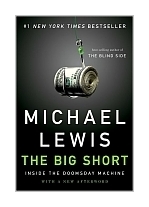|
||
• wydawnictwa polskie
• Zamów informacje o nowościach z wybranego tematu • kontakt
• Cookies na stronie |
THE BIG SHORT: INSIDE THE DOOMSDAY MACHINELEWIS M.wydawnictwo: NORTON , rok wydania 2011, wydanie Icena netto: The real story of the crash began in bizarre feeder markets where the sun doesn't shine and the SEC doesn't dare, or bother, to tread: the bond and real estate derivative markets where geeks invent impenetrable securities to profit from the misery of lower- and middle-class Americans who can't pay their debts. The smart people who understood what was or might be happening were paralyzed by hope and fear; in any case, they weren't talking. Michael Lewis creates a fresh, character-driven narrative brimming with indignation and dark humor, a fitting sequel to his #1 bestseller Liar's Poker. Out of a handful of unlikely-really unlikely-heroes, Lewis fashions a story as compelling and unusual as any of his earlier bestsellers, proving yet again that he is the finest and funniest chronicler of our time. Twenty-four year-old Princeton graduate Michael Lewis had recently received his master's degree from the London School of Economics when Salomon Brothers hired him as a bond salesman in 1985. He moved to New York for training and witnessed firsthand the cutthroat, scruple-free culture that was Wall Street in the 1980s. Several months later, armed only with what he'd learned in training, Lewis returned to London and spent the next three years dispensing investment advice to Salomon's well-heeled clientele. He earned hundreds of thousands of dollars and survived a 1987 hostile takeover attempt at the firm. Nonetheless, he grew disillusioned with his job and left Salomon to write an account of his experiences in the industry. Published in 1989, Liar's Poker remains one of the best written and most perceptive chronicles of investment banking and the appalling excesses of an era. Since then, Lewis has found great success as a financial journalist and bestselling author. His nonfiction ranges over a variety of topics, including U.S./Japanese business relations (Pacific Rift), the 1996 presidential campaign (Trail Fever), Silicon Valley (The New New Thing), and the Internet boom (Next: The Future Just Happened). He investigated the economics of professional sports in Moneyball (2003) and The Blind Side (2006); and, in 2008, he edited Panic, an anthology of essays about the major financial crises of 1990s and early "oughts." 228 pages, paperback Księgarnia nie działa. Nie odpowiadamy na pytania i nie realizujemy zamówien. Do odwolania !. |


